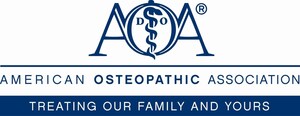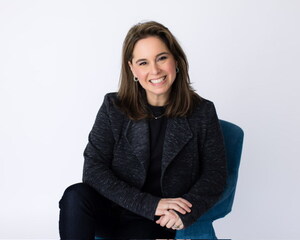CHICAGO, March 26, 2019 /PRNewswire/ -- Graduating osteopathic physicians are increasingly planning to practice in primary care, a trend researchers say shows that loan forgiveness incentives are influencing new doctors' choice of specialty, according to a new study in The Journal of the American Osteopathic Association.
A 2016 survey of graduating osteopathic medical students showed 33 percent intended to work in primary care. That represents an 18 percent increase from 2007, when only 28 percent of osteopathic medical students indicated a future career in primary care.
During that same time period, medical schools' tuition increased at a rate more than double that of national inflation, and the average medical education debt load for osteopathic physicians went up 54 percent, with the mean physician indebtedness at $240,331 in 2016.
"What we saw is student debt absolutely has an influence in determining physician practice," says Kenneth Poole, Jr., MD, an internal medicine physician at Mayo Clinic, and co-author on this study. "We can also see that programs offering loan forgiveness to physicians who choose primary care are working."
Dr. Poole and his co-authors analyzed responses to annual surveys of graduating medical students' plans for residency. The researchers evaluated graduating physicians in the top quartile for indebtedness, finding 35 percent who intended to practice in primary care would also use loan forgiveness programs. However, only 20 percent of those in the top debt quartile intended to practice in primary care without using loan forgiveness programs.
"We found a strong association between increased debt load, intention to use a loan-repayment program, and intention to practice in primary care," Dr. Poole says.
A need for growth
While existing loan forgiveness and repayment programs are helpful, Dr. Poole says they should be expanded to keep pace with the ever-increasing costs of medical school.
"It has been estimated that by 2030 the U.S. will have a primary care shortfall ranging between 7,300 and 43,100 physicians," says Dr. Poole. "We need to reduce any existing barriers to physicians choosing primary care to mitigate this problem."
He added that primary care physicians not only improve individual health outcomes but also provide checks and balances for the use of health care dollars. Effective primary care is shown to decrease emergency department visits, hospitalizations and elective operations.
About The Journal of the American Osteopathic Association
The Journal of the American Osteopathic Association (JAOA) is the official scientific publication of the American Osteopathic Association. Edited by Robert Orenstein, DO, it is the premier scholarly peer-reviewed publication of the osteopathic medical profession. The JAOA's mission is to advance medicine through the publication of peer-reviewed osteopathic research.
SOURCE American Osteopathic Association
WANT YOUR COMPANY'S NEWS FEATURED ON PRNEWSWIRE.COM?
Newsrooms &
Influencers
Digital Media
Outlets
Journalists
Opted In





Share this article